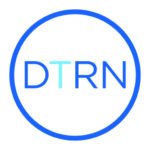If you’re considering Botox, you might be wondering, “How many units of Botox do I need?” This blog focuses on how many Botox units an individual typically requires for a Botox treatment, including generalized numbers for treatment areas and the number of units for maintenance treatments.
Botox is the most popular minimally invasive cosmetic treatment on the market. For close to two decades, individuals have turned to Botox to enhance their appearance and minimize the signs of aging. Due to its proven safety, efficacy, and reliable results, Botox has become a standard part of individuals’ skincare routines around the world for skin rejuvenation and maintenance.
If you’re considering a Botox treatment, you might be wondering how many units of Botox are needed. We turned to Houston-based Nurse Injector Marcy Bouillion to find out.
How many units of Botox do I need?
This is a common question that arises when considering a Botox treatment. The answer depends on several factors:
- An individual’s body chemistry impacts how it responds to Botox. So, two individuals with similar levels of lines and wrinkles might require slightly different units of Botox to achieve similar results.
- Different treatment areas require different amounts of Botox to relax the muscles of that area.
- The severity of lines and wrinkles plays a factor in the number of Botox units injected.
- Ongoing Botox treatments sometimes require more or fewer units to achieve similar results when compared to previous treatments.
With all of that said, there are some generalized amounts of Botox that have been determined by Allergan, the pharmaceutical company that makes Botox, based on the area treated.
Bouillion shares, “When assessing a patient and discussing their desired areas of improvement, dosage is very important. Botox, also known as OnabotulinumtoxinA, was FDA-approved for what is referred to as “The Look of 3” for patients. This includes the Frontalis (forehead), the Glabella region (in between the eyes), and the Orbicularis Oculi (around the eyes or crow’s feet). The dosage approved and suggested for these areas are 20 Units for the Frontalis, 20 Units for the Glabellar, and 12 units bilateral (24 units total) around the Orbicularis. This totals 64 Units in all, but this varies greatly from patient to patient.
How many units of Botox for the forehead?
Forehead lines are the lines that crop up across our forehead – or in the Frontalis region – due to repeated muscle movement from facial expressions. As Bouillion points out, the generalized amount of Botox recommended to treat forehead lines is 20 units.
The range is typically anywhere from 6 to 20 units.
How many units of Botox for relaxing frown lines?
Frown lines are the lines that appear between your eyebrows or the Glabella region. They are often referred to as the 1, 11, or 111 lines.
As Bouillion noted, similar to forehead lines, the generalized amount of Botox recommended for frown lines is 20 units.
The range is typically anywhere from 20 to 30 units.
How many units of Botox for reducing the appearance of crow’s feet?
Crow’s feet are the fine lines and wrinkles that appear around the outside corner of the eye area or the Orbicularis Oculi region. The generalized amount of Botox recommended to treat crow’s feet is 24 units total for both eyes or 12 units bilateral, as Bouillion indicates.
The range is typically anywhere from 6 to 15 units.
How many units are required in total for all FDA-approved treatment areas?
If you add the total to treat forehead wrinkles, frown lines, and crow’s feet, you’re looking at a generalized amount of 64 units for all three areas. However, as Bouillion emphasizes, the number of units you require to achieve your desired results might be more or less than these generalized amounts – it can vary greatly between patients.

How many units of Botox for off-label uses?
Botox is FDA-approved to treat forehead lines, frown lines, and crow’s feet. Botox is also often used in the cosmetic and aesthetic industry to lift the corners of the lips (aka smile lift), smooth out a dimpled chin, reduce the appearance of nose lines (aka bunny lines), smooth out the jawline, lift the corner of the eyebrows, and reduce the appearance of smile lines around the mouth. These treatments are all considered off-label uses of Botox.
“Many treatment areas have been introduced in the aesthetic industry for off-label use of Botox,” Bouillion shares, “Some of the most common of these treatments include the eyebrow lift, lip flip, gummy smile, bunny lines, and overall facial contouring, consisting of nose lifting and platysmal bands.”
The number of units for each off-label treatment area will vary. The ranges, on average, are 2 to 6 units for an eyebrow lift, 2 to 4 units for bunny lines, 2 to 4 units per side for a smile lift, and 2 to 4 units for a dimpled chin.
It’s best to work with a knowledgeable Botox provider to determine which areas you might wish to receive Botox injections and the number of units required for your desired results.
How many units of Botox will I need for maintenance treatments?
Botox results show up within 5 to 14 days of treatment and last for an average of four months. Many require a similar amount of Botox units when receiving maintenance treatments. That said, some may require more units or fewer units over time.
What should you consider when selecting a Houston Botox injector?
“When considering getting Botox, as well as finding a provider, definitely consider experience, exposure in the field, and level of training, as well as reviews online,” suggests Bouillion.
When searching for “Botox near me,” you will likely get a long list of Botox providers. If you’re in the market for a Botox provider, do your homework and consider the following tips:
- Look for a provider backed by experience, positive reviews, and testimonials.
- Seek out an Allergan-certified provider (Allergan makes Botox).
- Work with someone willing to answer all of your Botox questions.
- Identify an injector you trust and feel comfortable seeing for the long term.
- Consider the provider’s full array of services.
- Research the provider’s Botox specials.
Look for a provider backed by experience and positive reviews and testimonials
You want to work with someone supported by years of experience and positive reviews and testimonials. With so much information available online these days, it’s easy to research establishments and online reviews.
Seek out an Allergan-certified provider
Allergan is the maker of popular and reputable products, including Botox and Juvederm. A clinic or provider that is Allergan-certified should be knowledgeable about Botox and how it works in the body. DermaTouch RN has Allergan-certified trainers on-site to support their team of professionals and the clients who come through the door.
Work with someone willing to answer all of your Botox questions
Consider working with a “Botox near me” provider that offers a Botox consultation to ask all of your questions and ensure you feel comfortable with the provider before they inject you. You can ask them what they recommend and how many units of Botox you’ll need, so you can get an idea of what you’ll be committing to, as well.
Select a provider you can see yourself working with for the long term
Assuming you love your Botox treatment as many individuals do, you’ll want to get follow-up treatments every three to four months, on average, to maintain results.
Consider the provider’s full array of services
There are many complementary treatments to Botox, such as dermal fillers to add volume to the face and laser treatments to reduce the appearance of pores and age spots. A Botox provider that offers additional services can help you develop a treatment plan to address all of your skincare concerns in one location.
Research the provider’s Botox specials.
Many providers offer Botox specials and discounts each month. Many also offer tiered pricing or discounts on the unit price of Botox based on the number of units you purchase.
At DermaTouch RN, for example, the cost per unit of a Houston Botox treatment goes down when a minimum of 30 units are purchased, with an additional discount per unit when a minimum of 50 units are purchased. For clinics that offer tiered pricing such as this, you might consider getting all of your treatment areas treated at once if advised to do so by your injector so that you can maximize the discounts possible.
Consider a Botox consultation
The best way to determine if Botox is right for you and how many Botox units you’ll require is to schedule a consultation at your local clinic or MedSpa. During your visit, be sure to ask any and all questions that you have, as suggested by Bouillon.
“I feel it is very important to ask questions in your consultation with the provider, making sure you are comfortable with them and feel confident in your plan of care together,” states Bouillion,” Determining your desired areas of improvement, as well as dosage needed and future appointments is important. The provider should be very transparent about expectations, as well as discuss post-care instructions.”
Is a Botox treatment right for you?
Botox was the first FDA-approved treatment for the temporary improvement of moderate to severe crow’s feet, frown lines, and forehead lines. It’s been used by millions of individuals throughout the world and continues to be a household name for supporting a more youthful appearance. If you think you’re ready to give a Botox treatment a try, do your homework and select the right “Botox near me” clinic for you. Your injector will guide you in determining the best Botox treatment options and the number of units required to achieve your desired results.
As a top provider of Botox and Juvederm treatments in Texas, DermaTouch RN is here to answer any and all of your Botox questions. Contact us online or give us a call to learn more about Botox and schedule your Botox consultation.
Marcy Bouillion, MSN, FNP-BC

NURSE INJECTOR, ADVANCED PRACTICE NURSE
Marcy graduated with a Bachelor‘s in Nursing from the University of Louisiana and a Master’s in Science and Nursing from Chamberlain University. She has background experience in Labor and Delivery/Critical Prenatal Care, Women’s health, and Cardiac/Vascular cosmetic procedures. Marcy has had extensive hands-on training with the Allergan Medical Institute, SkinMedica and Dr. Teller. All include education in courses pertaining to Neuromodulators, Dermal Fillers, as well as advanced training in anatomy and physiology of the face and head.
DermaTouch RN offers minimally invasive and non-invasive treatments for men and women in Houston, San Antonio, Spring and Cypress, as well as the surrounding areas of Texas. We are the largest aesthetic practice in the Houston area, and all of our medical spa treatments are performed by a team of nurse practitioners, registered nurses, and aestheticians who receive continuing education to remain abreast of emerging treatments that benefit our patients. We invite you to learn more about our office before your consultation.





